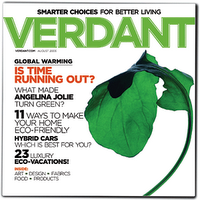Is it hype, or has a British publisher identified a new or untapped sector? And will publishers on this side of the pond imitate it?
Magazine publishers are always saying that they are innovators, but somehow following a pack mentality. Hence, the imitative (and unsuccessful) launch of the Weekly Scoop, trying to out-celeb the American competitors. Or Rogers's intended launch of Hello!, producing a Canadianized version of a British (and ultimately Spanish) original. Or the launch of BOBBi, in Canada, claiming to be unique, but really one of a largish crowd of titles aimed at youngish women.
Even when publishers follow someone else's lead, they claim to be doing the same thing, only better. Rarely does a publisher actually do something brand new (Lucky was an example -- a shopping magazine that has been cloned time and again following its launch).
Bauer is a fairly staid player in Britain and the U.S., calling itself the #1 newsstand publisher in the U.S. where it ranges from serving tweens and teens (M, J-14, Twist, Quizfest, Astrogirl, Life Story) to young women (In Touch Weekly, Life & Style Weekly) to baby boomers and beyond (Woman's World, First For Women, Soaps In Depth). In Britain, it publishes weekly titles like Bella, Fate & Fortune, Spirit & Destiny, Total TV Guide, TV Choice, Take a Break.
 It has unveiled its first launch in the women's weekly market in 11 years, and is crowing that it has opened up a whole new market sector. It's a newsy (but traditional looking) title called In The Know. It is a mix of hard and soft news aimed at 25 to 35-something Moms. Stories on gritty topics such as Lebanon and Hurricane Katrina vie with stories about finding the perfect pair of jeans, travel and entertainment wrapped up in the look of a classic weekly. With an initial print run of 900,000, it will be supported by a £10 million marketing investment and the magazine will cost £1, according to Bauer.
It has unveiled its first launch in the women's weekly market in 11 years, and is crowing that it has opened up a whole new market sector. It's a newsy (but traditional looking) title called In The Know. It is a mix of hard and soft news aimed at 25 to 35-something Moms. Stories on gritty topics such as Lebanon and Hurricane Katrina vie with stories about finding the perfect pair of jeans, travel and entertainment wrapped up in the look of a classic weekly. With an initial print run of 900,000, it will be supported by a £10 million marketing investment and the magazine will cost £1, according to Bauer.
Bauer have insisted In The Know is not its version of First, Emap's similarly newsy title for women. In The Know, it insists, is "an attempt to develop the weekly market on beyond the staple of celebrity and real life".
"In the Know is an entirely new breed of magazine for today's modern woman," said David Goodchild, Managing Director of H. Bauer. "It creates its own market and is testament to H. Bauer's track record on editorial innovation, in evidence to UK women since the launch of Bella in 1987.
"The concept will be a breath of fresh air to readers, retailers and advertisers alike in a sector that has been cannibalised due to a lack of innovation from recent launches."
So, are women ready for a magazine that takes the news as seriously as its recipes? In Canada, we've already had feature magazines like Chatelaine and Homemaker's which mix serious issues and lifestyle. But news, particularly in a weekly, is something we don't see, particularly aimed at women. It will be interesting to see if this idea takes off over there.
Because, then, sure as shooting, we'll see something like it over here. Even if it's not a weekly,
















 fashion books wheel out their blockbuster books. Canada's big two feature TV stars.
fashion books wheel out their blockbuster books. Canada's big two feature TV stars. 
 launching a custom publication called
launching a custom publication called 